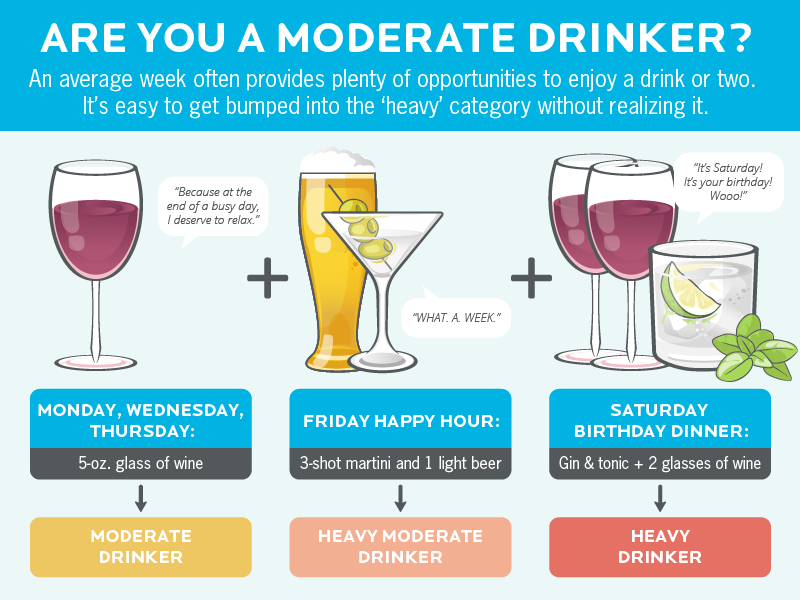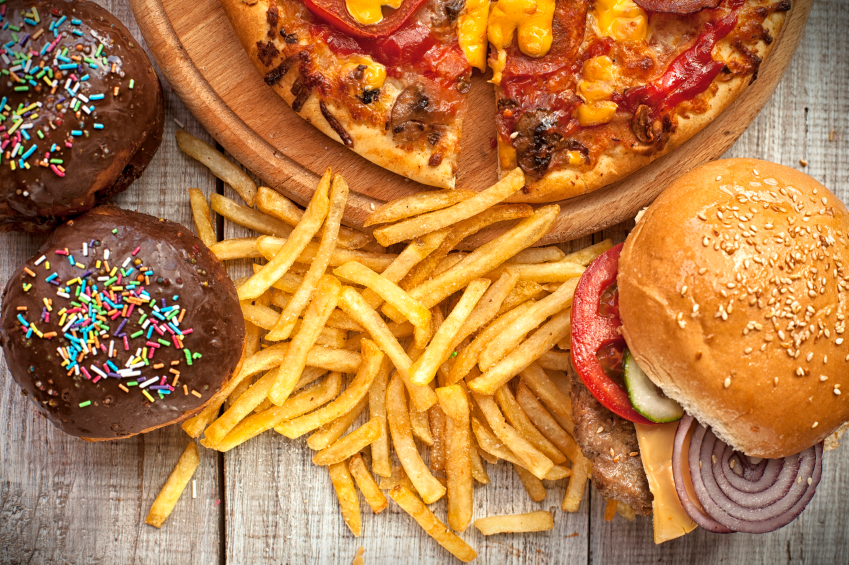Changing your eating and exercise habits is hard enough. Getting loved ones to support your healthy lifestyle changes? Prepare to grit your teeth. The company you keep does affect your progress toward healthier living. So here’s how to reduce peer pressure and get the social support you need.
- Want to listen instead of read? Download the audio recording here…
++++
You beam as you gather your family ‘round the dining table, where you’ve lovingly assembled a colorful and nutritious meal.
Everyone takes a seat.
You serve the grilled chicken, the sauteed broccoli, the pumpkin seed-studded salad. You nervously watch for reactions.
It’s really delicious…You swear!
Then, within moments:
A floret of broccoli makes a perfect arc across the room after your toddler daughter catapults it from her fork.
Your preteen son slumps so low that only his furrowed brow and the top of his phone peek above the table.
Your partner, trying to be polite and supportive, has been chewing his first bite for a good two minutes. Without swallowing.
Even the dog, usually hovering shamelessly, sniffs at a spinach leaf and then flops down in the corner with a sigh.
You feel… alone.
Now what?
To change your eating and exercise habits, do you have to convince your friends and family to change too?
Would getting loved ones on board with your healthy lifestyle changes make the whole endeavor easier?
And if so, how the #@*% do you do that?
This really matters to you.
You’re excited about your experiments with lifestyle changes.
You’re eating more vegetables. You’re walking on your lunch breaks and seeing a trainer on the weekend.
Your body is looking, working, and feeling better.
You feel sparks of inspiration and hope. And you want to keep going.
You desperately want loved ones with you.
Why?
Well, because you love them.
You want your family and friends to be healthy and safe — to feel good. You want to protect them from the pain of poor health.
You want the best for them.
And frankly, you need support from the people closest to you.
It seems hard — even near impossible — to make these big changes alone.
If you’re feeling these things it’s important to know: The thoughts are really, really normal.
It is hard to eat and move in ways that support your own health goals when, in your social circle, Fridays mean beer and tacos; Saturdays mean a Jenga tower of bacon at the greasy spoon; hanging out means meeting at the bar to shoot tequila instead of at the park to shoot hoops; etc.
In some ways, you are the sum of your social circle.
Habits can be contagious.
The people around you matter. And you matter to the people around you.
Research shows that we are affected by the body composition, habits, and lifestyles of those around us. The more people around us are doing something, or living a certain way, the more likely we are to do and live the same — whether that’s what we eat, how we eat, whether we move (or not), how we move, and so on.
If your friends and family are fitter and healthier, you’re more likely to be fitter and healthier. And the reverse is true, too.
Research shows that:
- The weight of those closest to you may help determine your own weight. According to one large-scale study, having a friend, an adult sibling, or a spouse who is obese increases your own obesity risk by 57 percent, 40 percent, and 37 percent respectively.
- Even your friends’ friends matter. Two degrees of separation between you and someone who is obese increases your own chances of being obese by 20 percent. You don’t even have to have met them for this to be a factor in your own weight.
- Your social network affects your obesity risk exponentially. Each obese person you know is correlated with a 0.5 percent increase in your risk of obesity. Thus, having five obese social contacts more than doubles your risk of becoming obese.
- Your weight is more influenced by people of your own gender. For women, this means that a girlfriend’s or same-sex partner’s weight may have a larger effect than a guy friend’s or opposite-sex partner’s; and vice versa for men.
- Weight convergence likely happens subconsciously. Researchers believe that we change our habits to match those of our social group without talking or even thinking about it.
- The amount you eat depends on who you’re eating with. Dine with a big eater, and you’re liable to consume more; sit down with a light eater, and you’re likely to take in less. This effect has been observed even among strangers. When asked, the diners usually attribute the mirroring effect to taste and hunger as opposed to the behavior of others around them.
- How much you eat also depends on the size of the group you’re with. Eating with one, two, three, four, five, six, and seven or more other people is associated with a 33, 47, 58, 69, 70, 72, and 96 percent increase in energy consumed, respectively.
- Your social network can also have a big impact on what you eat. People whose friends generally meet the guidelines for produce intake are more likely to eat at least five servings of fruit and vegetables per day.
- Your impression of social norms help determine what you eat, how much you eat, and your physical activity level. If getting a light salad for lunch seems “normal”, that’s what you’re likely to do, even if no one’s going to see you eat it. Conversely, if eating a bag of Ruffles for lunch seems “normal”, you may do that, even if you know the salad is more aligned with your health goals. Those who report a high level of physical activity as the social norm are also more likely to be active themselves.
As you can see, most of this happens subconsciously. We often change our habits to match those of our social group without talking or even thinking about it.
It’s not just how you eat and move, of course. Research indicates that you’re influenced by family and friends for other big-deal game-changers, like whether to get married or when to have a baby.
Of course, all of these findings are correlations — researchers are still working out exactly why the body weight and lifestyle of friends and family affects your own.
But why does it work this way? Why can’t you be a lone wolf or a unique individual? Well, in some ways, social influence is a good thing.
Social cohesion keeps us alive.
Human beings are social creatures.
We evolved in small groups who depended on one another for survival. Much of our brain is devoted specifically to social cues and communication: recognizing faces, reading emotions, making and understanding language, etc.
We depended on social cohesion — on belonging — to survive. To be alone (whether abandoned, rejected, or left behind) often meant certain death.
Today, modern medicine shows us that loneliness can still kill: our bodies respond to social rejection and isolation as if they were viral threats. When we are persistently lonely, inflammation goes up, immunity goes down; we get more chronic diseases and die sooner.
Aloneness is scary. Vulnerable. Difficult.
“Aloneness” can be “real”, like the actual aloneness of a young woman who chooses to stay in to eat a healthy dinner and get a good night’s sleep when all her roommates have gone out for pizza and partying.
“Aloneness” can also be a feeling, like the way a guy feels when all his buddies are drinking beer and he’s got a seltzer.
If you’re the only one at happy hour ordering a side salad instead of fries, it’s basically like you’re outside the campfire circle of social safety, just waiting for the lions to attack your tender, undefended flesh.
Thus, protecting ourselves against aloneness is in our DNA.
Swimming against the current is hard.
Of course, it is possible to go it alone. (Terms like “pioneer” and “trailblazer” exist, after all.)
But let’s face it: It’s a lot easier to eat better and get more exercise when your social environment — the behavior of your family and friends — supports your goals.
As with all things, the laws of physics come into play. When you’re trying to change, you may encounter either friction, or momentum.
Friction can make you feel stuck.
Friction makes things harder to do.
Eye-rolling coworkers, spinach-resistant kids, and chili nachos-loving friends — people who explicitly disagree with you or simply engage in opposing habits — create environmental and emotional barriers as you try to move toward your goals.
Friction is:
- when you make a big batch of kale chips for your family on movie night instead of the usual popcorn, and your kids respond with flailing limbs, screeching protests, and exaggerated gagging performances.
- when you sign up for a 10K run and your friends wag their fingers at you and tell you that running will kill your knees.
- when you make an agreement with your mother-in-law that you will take care of the sides for Thanksgiving dinner because you want to provide healthy options, but when you arrive she has prepared all the usual greasy, sugary dishes because she “didn’t want to break tradition”.
When you’re dealing with friction, lifestyle change is like climbing a steep mountain with gravel moving underneath you — complete with cursing, tripping, and slow progress.
Momentum helps you keep rolling.
Momentum boosts you and replenishes your energy.
Willing and/or like-minded loved ones can help keep you accountable, connected, and supported, bolstering you as you work to change your eating and exercise routine.
Momentum is:
- when your whole family chips in to make a wholesome meal, turning food preparation into a family project. You talk about what fruits and vegetables you like, research healthy recipes, and try new weird-shaped vegetables, together.
- when you sign up for a 10K run and your friends ask if you want a cheering section, or at least someone to throw water on you (supportively, of course).
- when you make an agreement with your mother-in-law that you will take care of the sides for Thanksgiving dinner. She gets the hint, lets you do your thing, and takes a cue from you and puts out some local berries for dessert as well. (Of course, people still hit the pie… but… well… c’mon, it’s pie.)
Be brave; be positive.
Now here’s some “PN physics”: You can have friction and momentum, together.
In other words, even if you encounter resistance, you can still get support too.
Even if your loved ones aren’t super-enthusiastic about your nutrition and fitness experiments, or will never love pea sprouts like you do, it doesn’t mean they don’t care, or won’t help.
- You can pursue your goals in the face of wavering or stingy support.
- You don’t have to dump all your friends and family.
- Most importantly, you may not even have to try to convince anyone in order to get them on board.
Social support works both ways.
The people around you can influence you. And you can influence them back.
This is where the good type of “going it alone” comes in: leadership.
While it may be easier to wait until your immediate social circle comes around to prioritizing healthy choices, it’s also incredibly empowering and inspiring to be a leader for change, despite the forces against you.
And in doing so, you’ll build your own small wave of momentum that, little by little, erodes the friction you encounter.
But here’s an important tip: You don’t reduce friction by pushing back. A powerful healthy-lifestyle pioneer… is a peaceful one.
In order to step into that role, try this gentle, sometimes counterintuitive, action plan.
3 crucial strategies for getting friends and family to support your healthy lifestyle.
1. Accept that you may not be “right”.
Step back and embrace some hard truth.
How much of the friction you feel from others… is actually created by you?
Even if you mean well, and even if you are absolutely 100% correct (yes, smoking is bad; yes, vegetables are good)…
How often have you been judgemental? Insistent? Preachy? Self-righteous? Dismissive? Over-enthusiastic? Maybe even a bit… culty? (That t-shirt that says “Kale University”? We see it.)
Conversely, how often have you been curious? Interested in others’ perspectives? Able to deal with diversity and tolerate various viewpoints? Open-minded? Empathetic and compassionate? A good listener?
Consider this: Maybe “right” isn’t so obvious.
All behaviors and choices have a reason to be there. You might not know the reasons; you might not quite understand the reasons or even agree with the reasons.
But whatever habits your loved ones are practicing, they are doing them for a reason. In some way, their habits are “right” for them. They may have only a limited toolbox of options or coping skills.
This means:
- understanding that your brother feels panicked and crushed under work stress, and sees drinking as the best way to cope.
- having compassion for your best friend, who is terrified to confront her body, and therefore gets defensive and critical every time you bring up your new health regimen.
- understanding that your parents were raised to respect traditional authority figures, so they still believe margarine is better for you than butter, because that’s what their doctor drilled into them 30 years ago.
When we focus on defending our “right-ness” and proving our loved ones’ “wrongness”, our perspective becomes very narrow and our relationships become oppositional.
However, when we let go of judgement and choose compassion and empathy, we make room for understanding.
Understanding dissolves conflict, because it usually shows us that, at our cores, we are all dealing with the same themes — we’re more alike than different.
Understanding helps us collaborate instead of clash; connect instead of criticize. We start to ask questions that, instead of inducing blame and shame, invite connection and support:
“Why are they so different from me?”
becomes
“When have I dealt with something similar?”
“How do I get them to stop the bad habit?”
becomes
“What problem is the bad habit trying to solve?”
“What is wrong with them?”
becomes
“What might they really need?”
As your loved ones begin to feel more understood, and less judged, they may begin to practice more flexibility and less judgement toward your new habits and beliefs too.
(And by the way, it’ll serve you immensely to practice non-judgement, compassion, and understanding on yourself too.)
2. Be persistent, not pushy.
Resistance more often comes from fear than from true philosophical opposition.
Change can feel scary. It can bring up issues of control, security, and identity, and it can also bring up painful emotions like anxiety, panic, shame, or loss.
When our loved ones resist change (in all the creative ways they can come up with — consciously and unconsciously, kindly and unkindly), what they might actually be feeling underneath it all… is fear.
Their fear can be the result of thoughts like:
- What if you become a different person?
- What if this new food tastes gross?
- What if your healthy habits make me confront my unhealthy habits?
- What if people don’t accept us?
- What if you judge me or don’t love me anymore?
- What if I can’t keep up with you?
- What if life gets uncomfortable?
- What if I lose you?
Just like a scared child, resistance and fear in their adult forms don’t respond well to rational arguments and pushing.
So while you must press forward with the changes you’re trying to make for your own well-being, you’ll more likely get support if you practice persistence rather than pushiness.
Pushiness means attempting to force friends and family to join/agree with you, and accepting only a rigid set of compliant responses.
Persistence means continuously offering opportunities for your friends and family to join you on your quest for a healthier life, and yet remains open to a wide range of responses to any given invitation.
So be persistent:
- Keep offering healthy dishes at the dinner table.
- Keep inviting your friends and family to join you on runs, hikes, and exercise classes.
- Keep having conversations about nutrition, healthy body image, and what it means to have a truly good, capable life.
Prioritize positivity and connection when you present these options, and expect resistance, sometimes over and over and over again.
As much as you can, take the drama and emotional charge out of these conversations. Validate your loved ones’ reasons for staying the way they are, and don’t push back.
Perhaps, when their fear subsides and they realize it’s safe to dip their toe in the land of green smoothies and box jumps, your loved ones will join you, and you’ll ride off into the sunset (on your recumbent bikes, drinking coconut water) together.
3. Just “do you”.
Change is difficult.
In order to overcome the many bumps, blocks, and blusters inherent to significant lifestyle change, we need to be anchored to a deep, internal, personalized “why” that will pull us through.
You can’t manufacture this type of motivation for someone else. No matter how hard you try to coerce your kids, spouse, parents, and friends to change, they may have none of it.
And in fact, that may be a good sign. Because that means they know that in order to make the kinds of changes you’re making, they have to want it too.
We call this “intrinsic motivation” — a connection to one’s own, internal reasons for doing something. Research shows that intrinsic motivation leads to change that’s longer-lasting and more self-sustaining than extrinsic motivation, which is based on the desire to obtain external outcomes such as good grades or the approval of others (ahem).
Intrinsic motivation requires deep thought and reflection, and may take longer to develop.
So respect that your loved ones may take time to connect to their own reasons for eating and moving better.
Meanwhile, just “do you”.
Focus on your own intrinsic motivations. Stay connected to what’s driving you, deep inside, to make these personal changes.
Without ignoring your natural love and concern for loved ones, let your attention turn inward. Spend more energy on your own growth and development.
Which could lead to something else amazing…
Think about how you feel when you watch someone you love work toward a BIG goal with heartfelt determination, grit, and bravery.
Think about how you feel when you watch that person persist despite setbacks, failures, and fears.
Think about how you feel when you watch that person triumph, however messily and imperfectly, over adversity.
You feel inspired.
You feel like anything is possible.
You feel like maybe you could do something great too.
And that is the beautiful irony in “doing you”:
By working toward and achieving a healthier, happier, more confident and capable version of yourself, you become the inspiration, the positive influence to your family and friends.
And it all comes full circle when that little healthy-lifestyle wave you started attracts other riders, builds, and then becomes a huge tidal of momentum to carry you to your final objective — a fit, healthy you — and keep you there.
Influence happens in both directions, remember?
Lead the way.
What to do next.
We’ve learned that change is hard, and changing others is harder. It can be challenging to know where to start.
Take one of these concrete steps today to start reducing conflict and maximizing your own efforts toward healthy living.
Practice sacrificing a “win”.
If you find yourself in a conflict with a loved one, check your instinct to want to be “right”.
Ask yourself who you want to win: you, or the team that makes up you and your loved one(s).
Sometimes we have to sacrifice personal “wins” for the sake of the greater good of the family/friend unit. Often that means loving and accepting our loved ones even when they disagree or aren’t compliant with what we believe is “right”.
This takes practice, and it can be uncomfortable at first.
Find one opportunity to practice non-rightness today, and note the result.
Use “approach” goals instead of “avoid” goals.
To foster understanding among you and loved ones, play with the language you use to (gently) coach them.
“Avoidance” goals — such as “stop eating junk food”, “don’t watch TV after dinner”, and “don’t overeat” — are more likely to make people feel restricted, rebellious, and resistant.
“Approach goals” — such as “try two new vegetables this week”, “eat three different colors of plants today”, and “do something that gets you out of breath for 20 minutes” — are more likely to make people feel expansive, creative, interested, and willing.
Approach goals help make the process of change more harmonious, positive, and even fun for you and your family.
Find objective support that’s just for you.
Having a support person that is detached from your social bubble can be tremendously helpful.
A skilled nutrition and fitness coach provides an objective perspective and functions as a sounding board, a voice of reason, and a resource for practical ideas and inspiration — a source of momentum.
An experienced coach can also provide accountability, which is especially important if you are the lifestyle “trailblazer” in your social circle.
Check your motives.
Each time you make a decision about food or exercise (or any other health factor you’re trying to improve) ask yourself:
Am I doing this because everyone else is doing it, or because it matches my own internal intentions and values?
This doesn’t mean it’s wrong to want to do what other people are doing. But if you do go the way of the crowd, do it consciously.
Involve your loved ones.
Small moments of support can make a huge difference when you’re trying to move away from friction, toward momentum.
So:
- Ask your spouse to help you stretch out after a workout, or to accompany you on a morning walk.
- Ask your children to help you menu plan, choose vegetables at the grocery store, or even help prepare a meal.
- Ask your best friend for a hug when you’ve had a stressful week.
- Ask your friends and family to cheer you on at a race.
Involve and integrate your social network, into your life, without forcing them to change themselves.
Accept them as they are, and be sure to tell them how much it means to you that they are there for you.
References
Click here to view the information sources referenced in this article.
Want help becoming the healthiest, fittest, strongest version of you?
Most people know that regular movement, eating well, sleep, and stress management are important for looking and feeling better. Yet they need help applying that knowledge in the context of their busy, sometimes stressful lives.
Over the past the past two decades, we’ve used the Precision Nutrition Coaching method to help over 150,000 clients lose fat, get stronger, and improve their physical and mental health… for the long-term… no matter what challenges they’re dealing with.
It’s also why we work with health, fitness, and wellness professionals (through our Level 1 and Level 2 Certification programs) to teach them how to coach their own clients through the same challenges.




Share